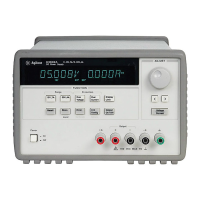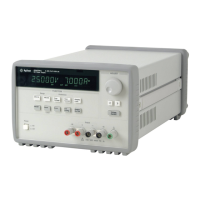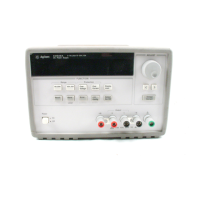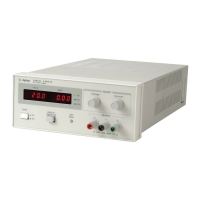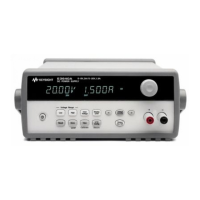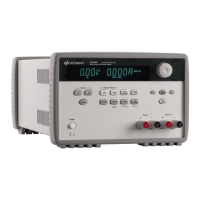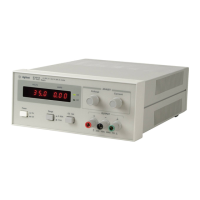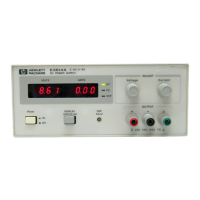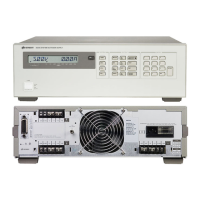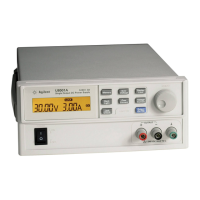Chapter 4 Remote Interface Reference
Triggering Commands
81
4
Triggering Commands
The power supply's triggering system allows a change in voltage and current when
receiving a trigger, to select a trigger source, and to insert a trigger. Triggering the
power supply is a multi-step process.
• First, you must select an output with the INSTrument:SELect command and
then configure the power supply for the triggered output level by using
CURRent:TRIGgered and VOLTage:TRIGgered commands.
• Then, you must specify the source from which the power supply will accept the
trigger. The power supply will accept a bus (software) trigger or an immediate
trigger from the remote interface.
• Then, you can set the time delay between the detection of the trigger on the
specified trigger source and the start of any corresponding output change. Notice
that the time delay is valid for only the bus trigger source.
• Finally, you must provide an INITiate[:IMMediate]command. If the
IMMediate source is selected, the selected output is set to the triggered level
immediately. But if the trigger source is the bus, the power supply is set to the
triggered level after receiving the Group Execute Trigger (GET) or *TRG
command.
Trigger Source Choices
You must specify the source from which the power supply will accept a trigger. The
trigger is stored in volatile memory; the source is set to bus when the power supply
has been off or after a remote interface reset.
Bus (Software) Triggering
• To select the bus trigger source, send the following command.
TRIGger:SOURce BUS
• To trigger the power supply from the remote interface (GPIB or RS-232) after
selecting the bus source, send the *TRG (trigger) command. When the *TRG is
sent, the trigger action starts after the specified time delay if any delay is given.
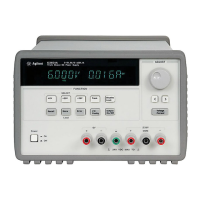
